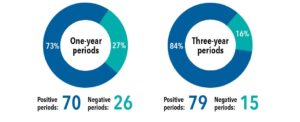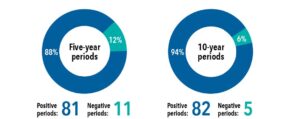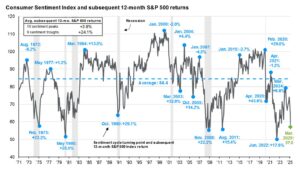Written by Rory O’Sullivan CFP®
Market volatility can be unsettling, especially for investors with significant assets at stake. A 5% market downturn might seem moderate, but for a $10 million portfolio, that’s a $500,000 drop—enough to make even seasoned investors take notice. However, it’s crucial to remember that volatility is a natural part of investing and can even present opportunities for growth. In this post, we’ll explore why it’s important to understand your timeframe, how headlines and politics may not impact stock market prices as much as commonly believed, and the best ways to plan for volatility.
Understanding Your Timeframe
During periods of market turbulence, the instinct to pull out of investments can be strong. However, history has shown that staying invested is often the best strategy. Short-term market fluctuations do not erase the long-term upward trend of the stock market. When making any investment decision, it is important to understand your timeframe. If you need to access your investment for a major purchase in the next year, it may not be prudent to invest that money in the stock market. As the length of time that you can wait increases, the likelihood of your investment appreciating also grows significantly. The graphic below illustrates this well:


Headlines and Politics: The Real Impact on Stock Prices
It’s easy to be swayed by sensational headlines and political events, but these often have a limited impact on long-term market performance. While political decisions can influence market sentiment and cause short-term fluctuations, often called headline volatility, the fundamental performance of companies and broader economic trends play a more significant role in determining stock prices. The changes by the current administration and its impact on the economy and stock market has also impacted consumer sentiment. Historically, when consumer sentiment reaches a trough, the S&P returns an average of 24.1% over the next 12 months. When consumer sentiment reaches a peak, the S&P only returns 3.9%. It is impossible to predict when we will hit a trough, but historically, it has been advantageous to invest when there is more concern about the market.

Best Ways to Plan for Volatility
Planning for market volatility involves a combination of strategies to ensure your portfolio remains resilient. Here are some key approaches:
- Diversification: Spread your investments across various asset classes to reduce risk. A well-diversified portfolio can help mitigate the impact of market swings.
- Regular Rebalancing: Periodically adjust your portfolio to maintain your desired asset allocation. This helps you stay on track with your investment goals despite market fluctuations
- Long-Term Focus: Keep your investment strategy aligned with your long-term goals. Avoid making impulsive decisions based on short-term market movements.
- Emergency Fund: Maintain an adequate emergency fund to cover unexpected expenses without having to liquidate investments during a downturn.
- Professional Guidance: Work with a financial advisor to develop a personalized plan that considers your risk tolerance and financial objectives
By embracing these strategies, you can navigate market volatility with confidence and continue working towards your financial goals. The Mainspring advisor you work with is your best resource during these times. It is our job to understand your specific situation and ensure that your portfolio is well-prepared for the inevitable ups and downs of the market.
Any opinions are those of the author, are subject to change without notice and are not necessarily those of Raymond James. This material is being provided for information purposes only and does not purport to be a complete description of the securities, markets, or developments referred to in this material and does not constitute a recommendation. The information has been obtained from sources considered to be reliable, but we do not guarantee that the foregoing material is accurate or complete. There is no guarantee that these statements, opinions or forecasts provided herein will prove to be correct. Past performance may not be indicative of future results. Future investment performance cannot be guaranteed, investment yields will fluctuate with market conditions. Investing involves risk and investors may incur a profit or a loss regardless of strategy selected, including asset allocation and diversification. The S&P 500 is an unmanaged index of 500 widely held stocks that is generally considered representative of the U.S. stock market. Keep in mind that individuals cannot invest directly in any index, and index performance does not include transaction costs or other fees, which will affect actual investment performance. Individual investor’s results will vary. Material created in part by Capital Group and JP Morgan Asset Management. Raymond James is not affiliated with nor endorses the opinions or services of Capital Group or JP Morgan Asset Management.



